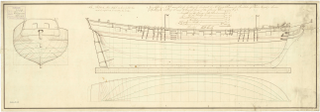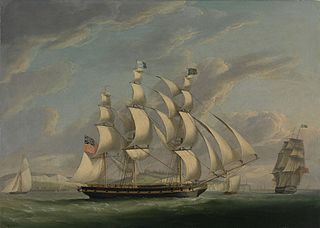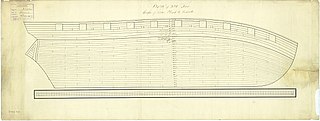
East Indiaman was a general name for any sailing ship operating under charter or licence to any of the East India trading companies of the major European trading powers of the 17th through the 19th centuries. The term is used to refer to vessels belonging to the Austrian, Danish, Dutch, English, French, Portuguese, or Swedish companies.
Britannia may refer to any one of a large number of ships:
Royal Charlotte was a three-masted merchant ship launched in 1819. Royal Charlotte carried convicts to Australia in 1825. On her way home to India via Batavia she wrecked on 11 June, but with minimal loss of life.
A number of sailing ships have been named Ocean.
A number of sailing vessels were named Alexander:
Numerous ships with the name Phoenix, for the constellation or the mythical bird, have sailed for the British East India Company (EIC) between 1680 and 1821:
Numerous vessels have borne the name Coromandel, named for the Coromandel Coast.

HMS Diligence was the name ship of her class of brig-sloops of the Royal Navy. She was launched in 1795 and lost in 1800. She spent her career on the Jamaica station where she captured four armed vessels, one of them after a short engagement, and many small Spanish and French merchant vessels in the Caribbean inter-island and coastal trade.
A number of sailing ships have been named Eliza.
Blenden Hall or Blendon Hall was launched in 1811 at Bridlington. A French frigate captured her in 1813, but then abandoned her. After her recovery she returned to trade. She was wrecked in 1821 at Inaccessible Island in a notable incident.

John O'Gaunt was a merchant ship launched in 1809 that traded with the West Indies. The French frigate Clorinde captured and scuttled John O'Gaunt in 1813.

HMS Derwent was launched in 1807 and later that year became one of the first ships sent by the British Royal Navy to suppress the slave trade.
Hind or Hinde was launched at Hull in 1800. After a voyage to Russia she made one voyage for the British East India Company. She then became a West Indiaman. She was wrecked in April 1815.
Several vessels, mercantile and naval, have been named Borneo for the island of Borneo:
Lord Forbes was launched at Chester in 1803 as a West Indiaman. She soon became an "armed defense ship", but by 1805 had returned to being a West Indiaman. She made two voyages as an "extra" ship for the British East India Company (EIC). She continued trading with India until 1817 when she sustained damage on her way to Bengal. There she was surveyed, condemned and sold.
Agincourt was a merchant vessel launched at North Shields in 1804. She was a transport and later sailed between Britain and Quebec. Her crew abandoned her at sea in 1821.
Several vessels have been named Paragon:
Several ships have been named Ceres for Ceres, the Roman goddess of agriculture:
Several vessels have been named Milford.
Boyne was built in 1822 in Newcastle upon Tyne as a West Indiaman. In 1824–1825 she made one voyage to Bengal for the British East India Company (EIC)). She next made one voyage to Bombay under a license from the EIC. She then returned to the West Indies trade. Her crew abandoned her on 18 August 1830 in a sinking state as she was sailing from Jamaica to London.
This page is based on this
Wikipedia article Text is available under the
CC BY-SA 4.0 license; additional terms may apply.
Images, videos and audio are available under their respective licenses.



